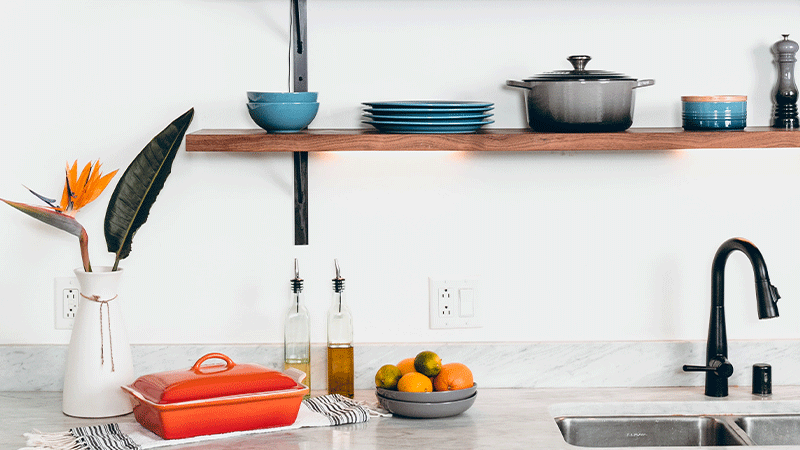
Chicago, IL – It’s the final day of the 2018 International Home + Housewares show (#IHHS2018), and everywhere we go the energy level is still high. Not surprising, given the display of colorful, clever, innovative products on display, and the throngs of people eager to experience the latest and greatest consumer housewares offerings.
It’s also exhilarating to see so many new brands and small brands share the same exhibit floor as brands that have become—no pun intended—household names. Regardless of size or product footprint, however, every brand here is subject to the same market conditions and challenges. The retail market is experiencing significant evolution, as evidenced by these three key trends.

TREND 1 – Increased consumer interest in healthy lifestyle and smart home products
A renewed interest in healthy lifestyles and making meals at home is generating growth in a number of housewares and home appliance categories. Research from the NPD Group shows growth in several areas in 2017:
- Kitchen appliances: 7 percent
- Non-electric housewares (cookware, cutlery and gadgets): 2 percent
- Multi-cookers (pressure cookers): 79 percent
Also on the rise are sales of reusable water bottles, which are projected to hit more than $10 billion by 2024, and smart home products, a market valued at $21.1 billion in 2016 and expected to reach $53.45 billion in 2022, according to Zion Market Research. (Source: Gifts and Dec)
TREND 2 – A revolution in retail
The way consumers shop continues to evolve as technology makes it easier to meet buyer demands of convenience, value and personalization. Last year, total adjusted U.S. retail sales equaled $3.5 trillion, with e-commerce taking credit for nearly half (49%) of the sector’s year-over-year growth, according to the U.S. Commerce Department. The incredible success of Amazon—which is projected to have sales of $142 billion next year, equating to nearly half (46%) of all online sales—is not only a testament to the growth of online shopping, but also to the search-driven, review-laden style of e-commerce that many consumers have come to expect.
Additionally, retail shoppers continue to show growing interest in browsing and buying via mobile devices. Research firm Packaged Facts reported that in 2017, more than a third (39%) of online purchasers reported making a mobile purchase, up from less than 20% of online purchasers in 2013. Voice searches, via mobile and devices such as Amazon Alexa and Google Home, are also growing significantly, with ComScore predicting that 50% of all online searches will be accomplished by voice search in 2020. While these statistics include all searches, not just product-related requests, it seems likely that voice, along with chat, will become more retail friendly in the near future.
For retail brands, the imperative is clear—embrace technology or perish. Yet, technology must be leveraged to support other priorities such as the customer experience and the customer journey. Our CEO, Chris McDonald, weighs in on the trend.
https://youtu.be/7E3JdiU0kPQ
TREND 3 – Conversational commerce gives rise to the “Fifth Wave” of retail
The strategic use of technology brings us to the third trend IHHS brands should embrace. According to 1-800-FLOWERS.COM CEO Chris McCann, a “fifth wave” of retail has begun with conversational commerce at its core. As McCann explains, customers want technology to be easy and casual. Thus, brands need to be accessible and responsive via the channels today’s customers prefer—notably mobile, chat and voice.
“[I] see the adoption of these capabilities accelerating more so than we’ve seen with mobile, more so than we’ve seen with computers, more so than we’ve seen with telephones. Whereas, I would like my estimation is that 18 to 24 months from now these conversational commerce capabilities that I just mentioned—the bots, the A.I. concierge, the voice computing capabilities of Alexa or Google assistant—will be a predominant entry point for our brands.” - Chris McCann, CEO, 1-800-FLOWERS (Source: Yahoo Finance)
Putting it all together
With consumer confidence seemingly on the rise—hitting the second highest level since 2001 in February—consumers should continue to show an interest in specialty kitchen appliances, gadgets, home furnishings and other housewares. The current interest in both healthy living and smart home technology is being met with a bevy of new and innovative offerings that will spur sales.
E-commerce and m-commerce growth is likely to continue as long as brands continue to make the end-to-end customer experience—including the post-purchase experience—as easy and user-friendly as possible. As voice assistants, artificial intelligence, machine learning, virtual and augmented reality and other technologies evolve, product brands that leverage this tech to enhance the customer experience will gain loyalty and increase market share.
Registria’s onboarding and point of sale solutions help product brands identify and connect with their customers. We would be happy to provide a demo for your team.
Registria believes that consumer trends toward mobile interaction of post product registration and customer interaction are the most important revenue driving trends for 2019 and beyond. Mobile product registration will be a driving economic force.

Discussing Digital Onboarding at International Home + Housewares Show
Last week I spent three fast-paced days in Chicago at the International Home + Housewares Show (#IHHS2017). Presented by the International Housewares...

1 min read
Registria Named 2020 Top Customer Experience Management Solution Provider by CIOReview
Registria Named to CIOReview's Top 20 Customer Experience Management Solutions for 2020 Denver, CO — Today, 54 percent of all product searches begin...


